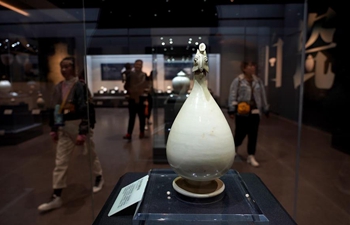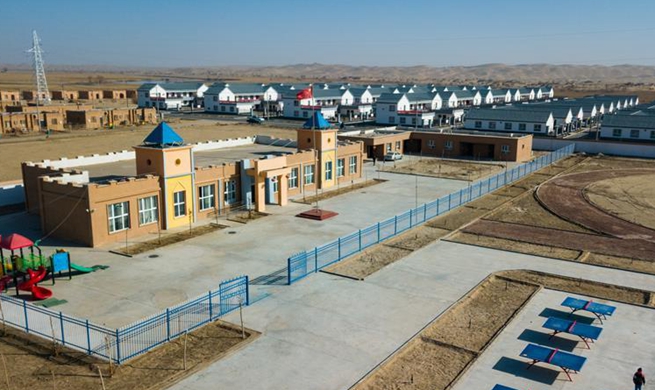BEIJING, Dec. 4 (Xinhua) -- China's lunar rover Yutu-2 has driven 345.059 meters on the far side of the moon to conduct scientific exploration of the virgin territory.
Both the lander and the rover of the Chang'e-4 probe have ended their work for the 12th lunar day, and switched to dormant mode for the lunar night, the Lunar Exploration and Space Program Center of the China National Space Administration (CNSA) said Wednesday.
Due to the complicated geological environment and the rugged and heavily cratered terrain on the far side of the moon, Chinese space engineers carefully planned the driving routes of the rover to ensure its safety.
Driving slowly but steadily, the Yutu-2 is expected to continue traveling on the moon and make more scientific discoveries, said CNSA.
China's Chang'e-4 probe, launched on Dec. 8, 2018, made the first-ever soft landing on the Von Karman Crater in the South Pole-Aitken Basin on the far side of the moon on Jan. 3, 2019.
A lunar day equals 14 days on Earth, a lunar night is the same length. The Chang'e-4 probe switches to dormant mode during the lunar night due to a lack of solar power.
During the 12th lunar day of the probe on the moon, the scientific instruments on the lander and rover worked well, and a new batch of scientific detection data was sent to the core research team for analysis.
As a result of the tidal locking effect, the moon's revolution cycle is the same as its rotation cycle, and the same side always faces Earth.
The far side of the moon has unique features, and scientists expect Chang'e-4 could bring breakthrough findings.
The scientific tasks of the Chang'e-4 mission include conducting low-frequency radio astronomical observation, surveying the terrain and landforms, detecting the mineral composition and shallow lunar surface structure and measuring neutron radiation and neutral atoms.
The Chang'e-4 mission embodies China's hope to combine wisdom in space exploration with four payloads developed by the Netherlands, Germany, Sweden and Saudi Arabia.

















